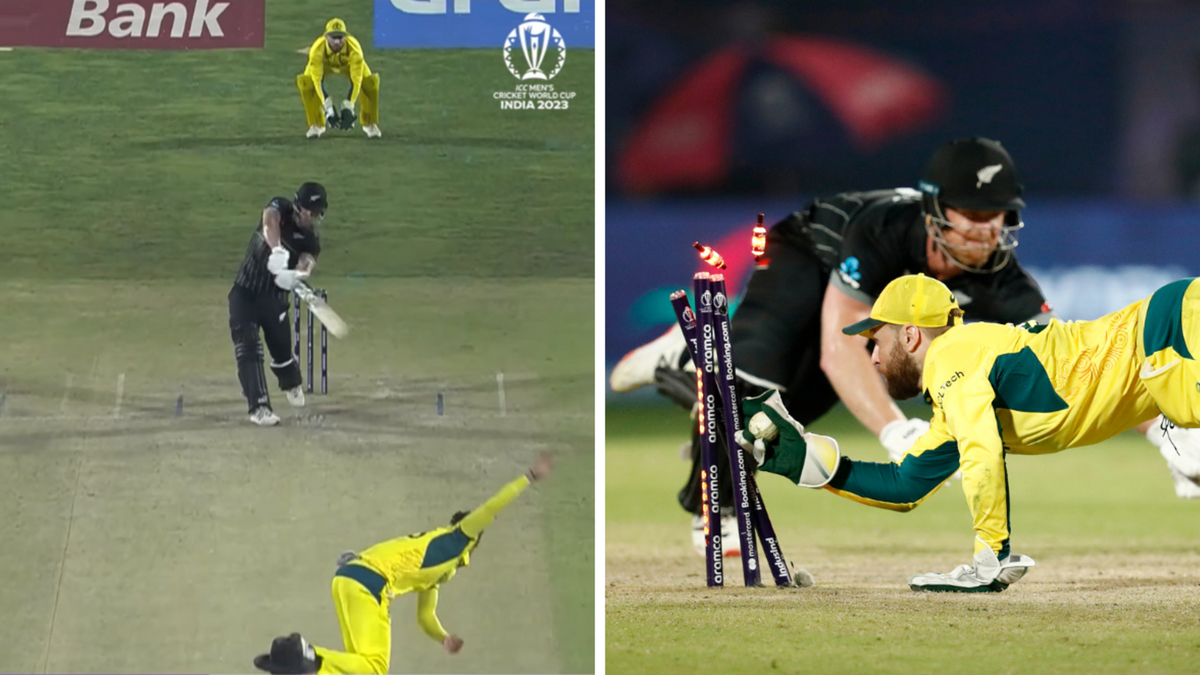
A debated no-ball call proved crucial in the Australia-New Zealand World Cup classic today (October 28) but there was no review of the decision. Here’s why.
To bet on the World Cup with our Match Centre Partners bet365 head here.
The moment came on the penultimate delivery of the game, with Jimmy Neesham threatening to pull off the highest chase in World Cup history. New Zealand needed seven off two balls, with the all-rounder on 58 off 38 deliveries, when he received a high full toss from Mitchell Starc.
The ball was there to be hit into the stands, but Neesham only managed to cloth it into the legside. He attempted to run two, but was run out at the striker’s end. No.11 Lockie Ferguson was not able to hit the final ball for a match-winning six, with Australia victorious by five runs.
Immediately, there was debate over the legality of the Starc delivery, with suggestions that it was too high, and should have been called a no ball. While it being a no ball would have made no difference to the dismissal, with run outs possible off all deliveries, it would have significantly eased the Black Caps’ equation. Instead of needing six off one, they would have needed five off two, with the rebowled penultimate ball a free hit.
I’ve only seen the replay once, at full speed, so have no idea.
But if it had been called a no ball, Lockie would have come in needing five runs from two balls – the first of which would have been a free hit. https://t.co/yRjDiO8cUK
— Michael Appleton (@michelappleton) October 28, 2023
But there was no no ball called on the field, and no review either. This might seem odd for a pivotal moment in a thrilling game, but it was correct under the ICC’s protocol for the competition.
Appendix D of the ICC’s playing conditions deals with reviews, with section 2.6 covering umpire reviews for no balls. This states that a review for no ball can only take place “If the bowler’s end umpire is uncertain as to the fairness of the delivery following a dismissal…either affecting the
validity of the dismissal or which batter is dismissed”.
While this review would have followed a dismissal, whether it was a no ball or not would not have affected the validity of the dismissal, or changed which batter was out, so it could not be reviewed.
This means that, strangely, Neesham might have been better off if he had hit the ball in the air and been caught, because then a review for no ball could have taken place.
It is not clear if a review would have changed the outcome. The Laws of Cricket outlaw full tosses passing “above waist height of the striker standing upright at the popping crease”, with replays indicating it would have been touch and go in this case.
The issue of whether technology should be used to help decide important non-wicket or boundary moments is an increasingly discussed one. Jofra Archer asked if it were possible to review a wide during the 2019 World Cup final super over, while in the recent Indian Premier League, teams were empowered to review any umpiring decision, rather than just in the case of a dismissal. This move is yet to make it to international cricket, however.








